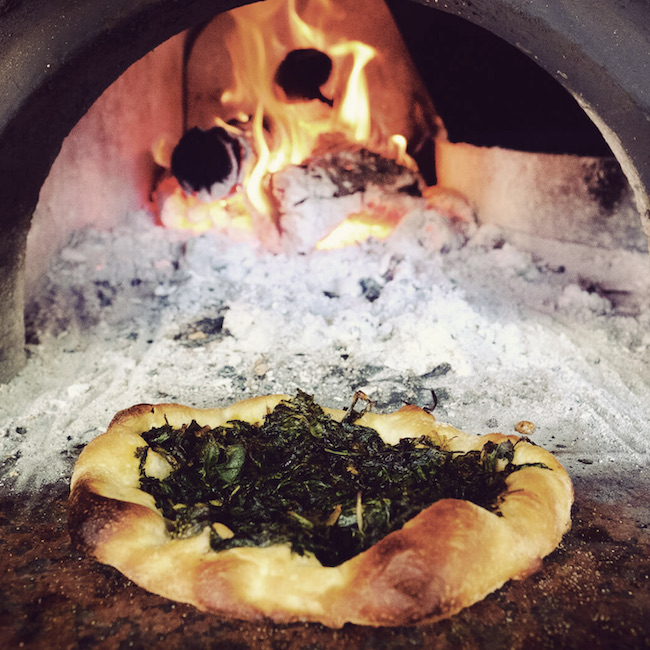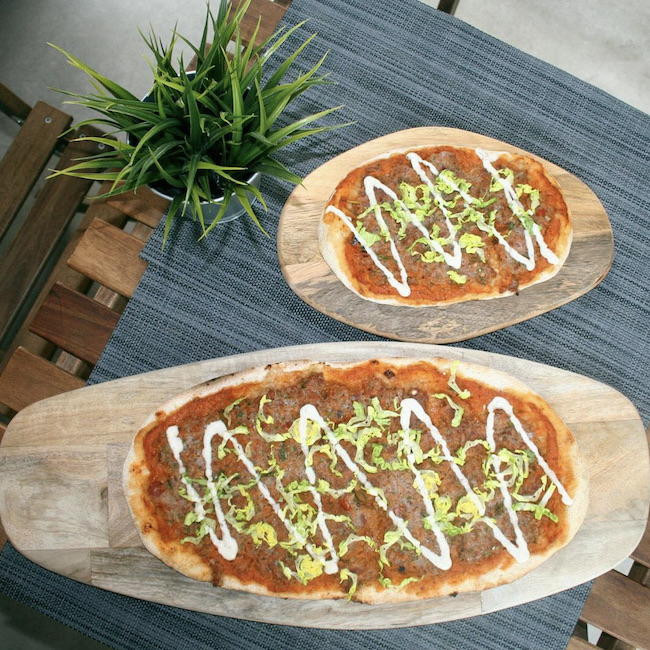.png.transform/rendition-xs/image_image%20(1).png)
Coca, the Ancient Flatbread that is Spain’s Best Well-Kept Secret
From vegetables and anchovies to nuts and candied fruit: all ingredientes are welcome in this delicious dish
There is a well-kept secret in Spanish regions such as Catalonia, Aragon, the Balearic Islands and Valencia. The name of it? The coca. What is it? That simple question is difficult to answer, given the seemingly endless list of varieties – sweet or savoury – and ingredients that can be involved. Essentially, the basis of a coca is the dough, usually made with water, olive oil, flour and yeast, or in the case of sweet cocas, with eggs, milk and sugar too.
A coca can come in many shapes and sizes, from barely five centimeters across for the smallest, to a whole meter for a giant portion. They can also be closed, and their toppings range from vegetables and anchovies to nuts and candied fruit. While its distant cousin, the pizza, always have a foundation of cheese and tomato, with a coca almost anything goes. Anything, that is, which has been locally sourced and is of the highest quality – a typically Spanish approach to cuisine that can be found in so many of the country’s restaurants, bakeries or charcuteries.

“We launched this project seven or eight years ago,” explains Pep Romany, a “maestro coquero” and the chef at the helm of Pont Sec, a restaurant specializing in cocas located on the outskirts of Denia, in the eastern Valencia region. “The idea was to recover traditional cuisine, and make use of products in their most original state. If we’re going to use tomatoes, we pull them off the vine when they’re mature and they never see the inside of a fridge.”
As Pep explains, anyone can make a coca. But at Pont Sec the process is painstaking, from the use of special flour and natural yeasts to a slow-fermentation process for the dough. “The result is that they are crunchy on the outside, but spongy on the inside,” he explains. As for the toppings, at Pont Sec these include anchovies, black pudding, aubergines and spinach, among others.
A dish for celebrations
The coca is also intrinsically linked with local fiestas. Xavier Puigseslloses learned his trade in his father’s bakery in Folgueroles, located in the comarca of Osona in Catalonia. Decades later he is still turning out dozens of cocas del mossen, a flat bread usually with no toppings at all that is sold in his bakery El Forn de St. Jordi. “In Catalonia there is the typical San Juan coca,” the prize-winning master baker explains, in reference to a sweet coca that is prepared and consumed on Saint Joan’s Eve, on 23 June. “And in my area, in Osona, we eat a sweet coca on Christmas Eve, one that’s made with egg and butter – like an Italian panettone.”
Cocas have also traditionally been prepared and eaten for other social occasions, whether cooked in an outdoor wood-fired oven by friends and family during a Sunday visit to a country house, or prepared in advance and taken along by people out for a hike. This is where the name coca de recapte comes from, the term used for many of the savoury versions in Catalonia, “recapte” referring to a kind of picnic in the Catalan language.

But what about the origins of the coca? There is little literature to be found on the subject. “There’s nothing written about the coca,” explains Pep Romany. “Someone suggested that we wrote a book telling the history… All recipe books have them, but just as another recipe.”
There are even doubts about the origin of the name, with some claiming the word derives from the Latin coquere, to cook, and others suggesting it actually has its roots in the word kok in Dutch, and the same connection to cake in English or kunchen in German.
“The history of the coca depends a lot on different customs from Spanish towns and villages,” explains Javier Arsuaga, who decided to bring cocas to the city of Madrid in 2018 via his restaurant La Casa Grande. “In a bakery, with the dough that didn’t rise, people in the town would take their products – whether vegetables or sausages – they would put them on the dough and bake them. That’s the origin of the coca – it’s not like someone invented the dish.” According to Pep Romany, in Denia city hall there is a receipt that dates from 1627, when a lawyer enjoyed a picnic by the sea. “The receipt refers to two balls of dough used to make bread and cocas,” he explains. “So in 1627 they were already being made.”
Could they have been the inspiration for the pizza? A student from Alicante University once worked on a thesis that argued that the Italian dish did not exist until the conquest of Naples in the 15th century by Alfonso the Magnanimous, the King of Aragon. Perhaps his troops came from the Valencian comarcas of Safor or Marina and took their culinary customs with them. We will likely never know for sure. Where there can be no doubt, however, is that this Spanish speciality can rival even the finest pizza, and arguably deserves to have achieved the fame of its Italian relative – both at home and abroad. Perhaps it’s time for Pep to write that book...

